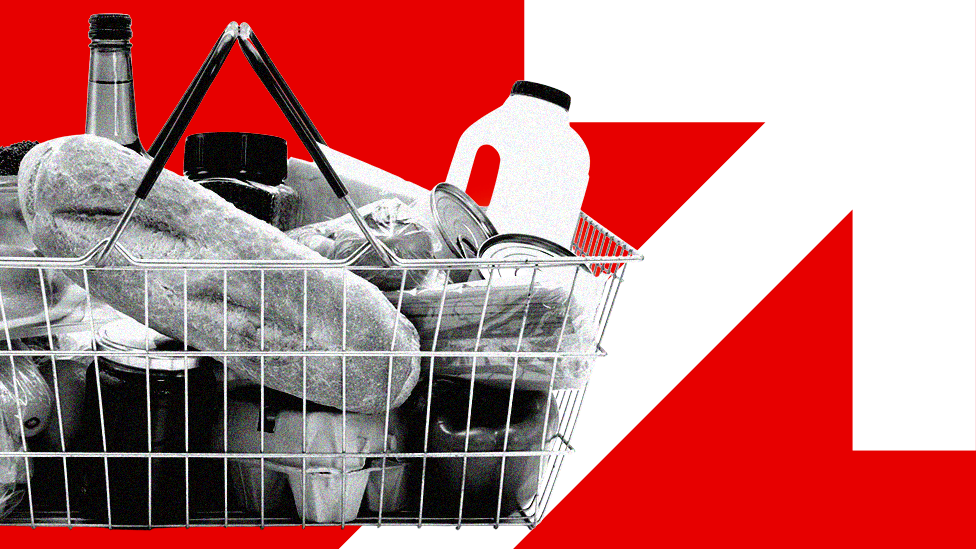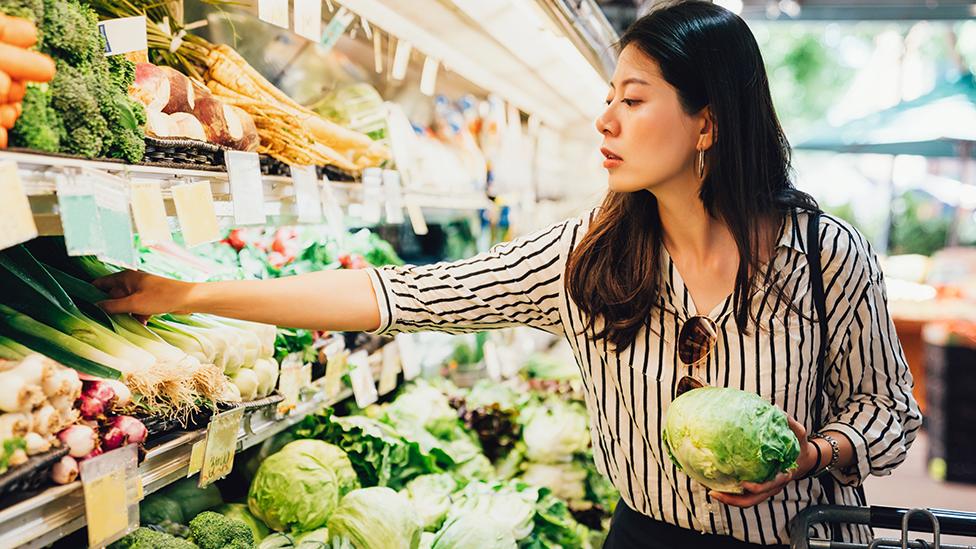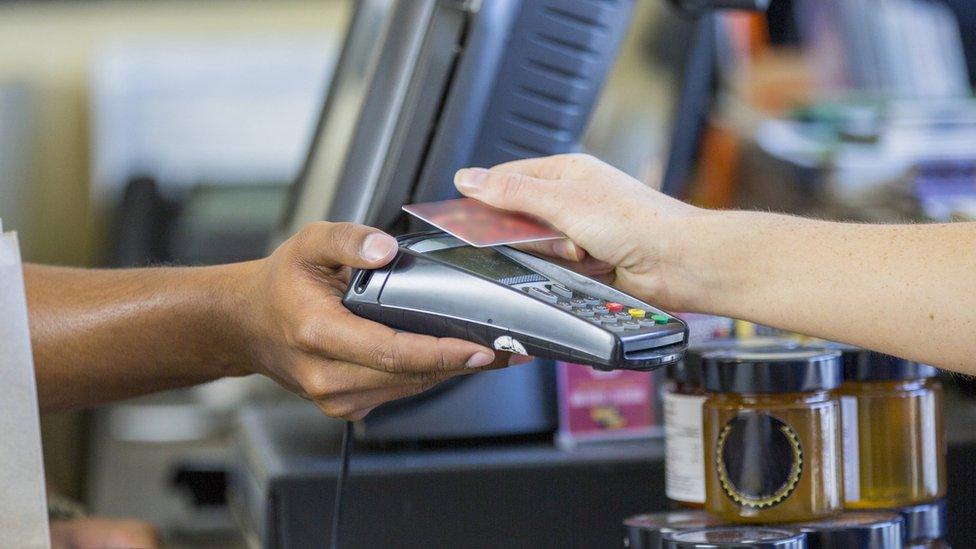Inflation rise puts NI households and businesses under more pressure
- Published

Households and businesses in Northern Ireland are still feeling the pressure of rising costs as the inflation rate increased unexpectedly last month.
After three consecutive months of slowing, the cost of living rose to 10.4% in the year to February from 10.1% in January, new figures show.
Inflation is the measure of increase in the price of something over time.
David Turner, who owns a framing business in south Belfast, has had to put his prices up by as much as 10%.
He cited 14 separate rises in supplier costs in the past year, forcing him to increase the cost of his own service.
The cost of wood used in frames, glass made in a gas-powered kiln, mount cards and backing boards - all essential for making a picture frame - had gone up, he said.
'We've had 14 supplier price rises in past year'
"So when all those prices go up we feel it, our margins get smaller so we've then had to put our prices up too," said Mr Turner.
"We've had to pass on a bit of it otherwise we wouldn't be here."
Inflation peaked at 11.1% in October and had fallen slightly in recent months but Mr Turner said that drop had yet to filter through.
"Talking to other small businesses, prices are always quick to go up but very slow to come down," he said.
"Hopefully there is something out there on the horizon that prices will come down a bit but usually they don't.
"Usually when they go up they stay up."

What does inflation mean?

Inflation is the increase in the price of something over time.
If a bottle of milk costs £1 but £1.05 a year later, then annual milk inflation is 5%.
To come up with an inflation figure, the Office for National Statistics (ONS) keeps track of the prices of hundreds of everyday items in an imaginary "basket of goods", external.
The basket is constantly updated. Tinned beans and sports bras were added last year.
Each month's inflation figure shows how much these prices have risen since the same date last year.
You can calculate inflation in various ways but the main measure is the Consumer Prices Index (CPI).
The last figure for CPI was 10.1% in January, down from 10.5% in December 2022.
Related topics
- Published22 March 2023

- Published1 March 2023

